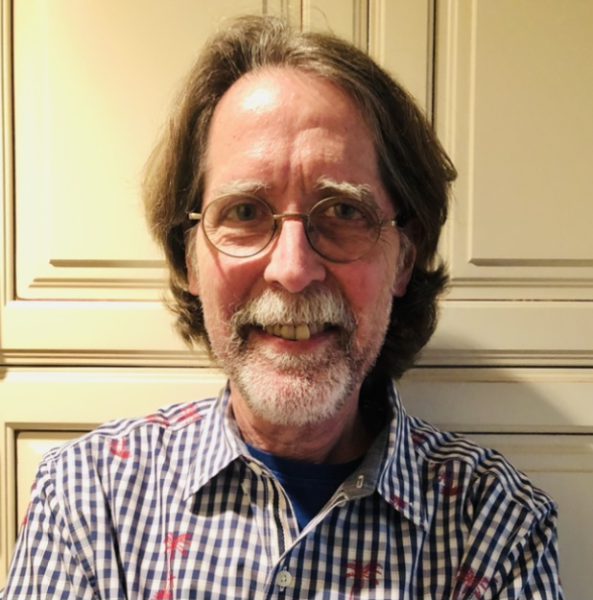Gardening in Aliso Canyon with Farmer Leo
 By Gary Stewart
By Gary Stewart
In 1871, the Thurstons arrived by wagon from Utah and picked a prime spot next to Aliso Creek, amongst the earliest Laguna homesteaders. Aliso Canyon was farmed and used to have “vineyards and orchards and animal paddocks.”
Cue Ryan Goldsmith, aka “Farmer Leo,” who operates a farm that is part of the complex of activities that constitute The Ranch at Laguna Beach.
Acknowledging the history, the farm entrance is from the Elizabeth Dolph Girl Scouts Camp, dating to 1935. Regular Scout activities continue, leapfrogging back over years of neglect.
I met Leo when he was on a panel of experts at a screening of the sustainable farming documentary “Common Ground.” This article resulted from an extended interview and tour of Leo’s creation.
Situated on the north side of Aliso Creek, next to a stand of eucalyptus that provides perches for hawks and owls watching for mice and gophers, visitors are welcomed by 50-foot standard beds of luscious veggies.
Multiple blue tubs of organic kitchen waste arrive daily from the kitchen, along with shredded paper (for aeration), from The Ranch offices. This is transformed over three to four months into the rich compost that is the garden’s sole fertilizer. The now rich, dark, soft soil is “no-till.”
“As a farmer, my real role is to improve the soil,” Farmer Leo says.
These are primary features of regenerative farming, increasing the soil’s carbon content.
Leo rotates cover crops to replace lost nitrogen (peas and beans), break up clods (oats) and create “green manure” (hairy vetch), which undergo “chop and drop,” to provide additional nutrients and mulch cover. His frugality shows in that the cover crops also serve as salad greens.
Leo coordinates regularly with the Harvest restaurant Executive Chef, Kyle St. John, who is game for “anything, anytime.” Leo provides around 100 pounds per month of seasonal, delicate, textured, colorful, and “lofty” varieties for salad mixes, where freshness is crucial. Leo also grows flowers (some edible, for soups, salads and cocktails) to supplement his use of the canyon’s natural flowering plants to grace the restaurant’s tables. He brings the waitstaff out to help them tell diners about it and learn from them what customers are asking.
I was tasting as we went along, of course, to verify the freshness.
Past a row of classic wood picnic tables for events is the coop of 25 chickens (these turn the garden into a farm). This is the source of the eggs used at Harvest for pasta dough.
Past the compost line is the greenhouse, where seedlings are grown. Two seeds go into each cell of soil in the sprouting trays. When they have two sets of leaves and are about three inches tall, Leo keeps just one sprout per cell, transplants them into the garden, and covers the soil with a loose “pick-up sticks” layer of straw to suppress weeds and retain moisture provided by a drip irrigation system. Leo is so water-conscious that he recycles the rinse water from preparing the crops for the kitchen.
Are the methods Leo uses practical for the average backyard gardener? “Yeah… it’s definitely applicable.”
Leo said that failures happen “every year… it’s a constant gamble.” Leo had to learn the hard way that freezing air overflows the creek into the low-lying section of the garden. He swears it is “the coldest spot in Laguna.”
Leo hosts the Laguna Beach High School environmental group FLOW (Fire, Land, Ocean, Water) for a two-day farming experience twice a year, the Mission Viejo Garden Club has an upcoming visit, and a marine biology group, as well. (Hint: Are you listening, Laguna Beach Garden Club?)
Leo is acutely aware that his little oasis is not 100% “natural,” like the 30,000 acres of contiguous Aliso and Wood Canyons Wilderness Park his garden borders. “I’ve seen bobcats jump into the garden while I’m here,” and a location ping for a mountain lion was “right here.”
He recognizes that his garden is a major disruption to what would otherwise naturally be there, almost as much as putting a building would be. That increases the challenge to work with the site, not “control it.”
As Farmer Leo puts it, “It’s not a battle. It’s a dance.”
Dr. Stewart, a native of St. Petersburg, Florida, stopped in Nashville and St. Louis for education before arriving in Southern California in 1977. A happily married internal medicine physician with three accomplished children, he is equally enthusiastic about the arts (piano player, art collector, bachelor’s in English, widely read), the sciences (physician, climate activist with Citizens’ Climate Lobby) and fun.




